Ahmed Ali – eLearning and Khan Academy
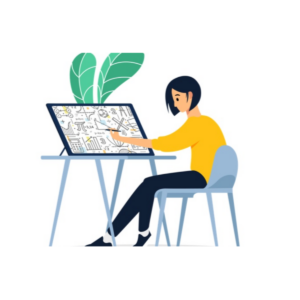
As technology has progressed, eLearning has been rapidly expanded. Universities and colleges have utilized eLearning to target working adults and provide flexibility to their online degree programs. This report will explore how eLearning has also revolutionized access to information. Outside of formal education, there is a growing segment of eLearning that will be referred to as supplemental education. Supplemental educational services provide additional support for individuals as they learn, either for formal schooling or for their own knowledge. With the global shift to remote learning because of the Covid-19 pandemic, the eLearning industry has seen dramatic growth. K-12, institutions of higher learning and job training have all shifted to remote platforms. With this increase in remote learning and life that has become increasingly technology driven, people have been turning to eLearning to supplement their learning for both formal and informal education. This report will conclude by analyzing Khan Academy, the online learning platform. Khan Academy’s founder Sal Khan has said that the platform aims to close the digital divide in a post pandemic education setting. This analysis will focus on the platform’s strengths, weaknesses and opportunities as it continues on this difficult task.
Micheal Berro – Global Citizen High School
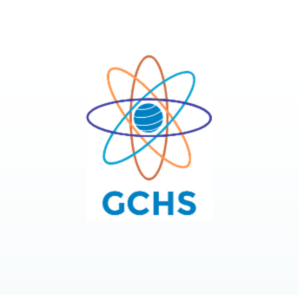
Over the past decade, the United Nations Educational, Scientific and Cultural Organization (UNESCO) has promoted global citizenship as an integral element to integrate into classroom curriculum across the world in order to better educate and prepare future leaders for the future’s global challenges. However, efforts to implement global citizenship throughout the K-12 institutions have faced challenges and difficulties in integrating global citizenship into existing curriculum. These challenges have manifest in different ways: sometimes efforts end up promoting national citizenship more than global citizenship (Alviar-Martin & Baildon, 2016;Davies & Reid 2005) as well as challenges related to teacher preparedness to address global topics and perception bias (Yamashita, 2006;Goren & Yemini, 2017) represent just a fraction of the challenges facing educators and institutions that seek to accomplish the goals UNESCO has set Nevertheless, the need for global citizenship is clear as global challenges continue to grow and evolve. As a result, a personalized learning platform is need that introduces high school juniors and seniors to the topic of global citizenship and the UN’s sustainable development goals, explores the ways in which these goals are being met, and provides them ideas and tools for these students to engage in global topics in their communities is needed. To that end, Global High is an online course that will provide high school juniors and seniors the opportunity to explore global topics, help them make a difference in their communities, and prepare them for the challenges they will face in the years ahead. By completing Global High, students will begin to develop a global mindset and awareness about contemporary global topics and challenges by engaging the UN’s sustainable development goals and hone their leadership skills by developing plans on ways in which they can engage their local communities to help meet the goals and subgoals of the sustainable development program.
Diane Boswell – Deconstructing Dyslexia
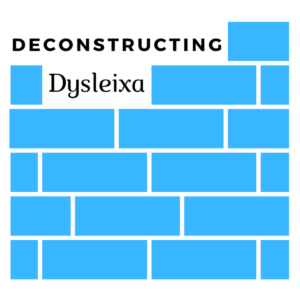
How can something so common also be so unfamiliar? Dyslexia, the most prevalent language-related learning disability accounts for 80-90% of all learning disabilities, yet few people know anything about it. Research has determined that dyslexia is a chronic condition impacting both males and females equally, and the gap between typical and dyslexic readers is present as early as first grade. Yet most children are not diagnosed until third grade. In response, this project will introduce Deconstructing Dyslexia and through its modules, parents and teachers will learn about the natural and neurological conditions that are dyslexia along with the latest research on early screening options. It will also review the importance of knowing one’s family history, how dyslexia presents in preschoolers, and what to do if a child or student displays symptoms. We will become familiar with the language surrounding dyslexia and learn more about what a structured literacy program actually is and what it looks like in action. Upon completion, parents and teachers will be more aware of the earliest signs of dyslexia which will lead to children and students receiving earlier interventions.
Katie Bourque – Robo Advisory Industry
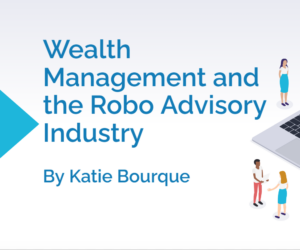
The wealth management industry is undergoing a huge transformation as technology advances and consumer preferences shift. In this report, I will explore the relatively new phenomenon of robo-advisor apps and online platforms by describing their history, analyzing the numbers of users, its market share and indicators for its future. Next, this report will highlight one such tool and analyze its strengths and weaknesses while highlighting possible opportunities and threats. The report will conclude by discussing the ways in which robo-advisors and online platforms have the ability to disrupt the wealth management industry.
Taylor Brown – Inside Track
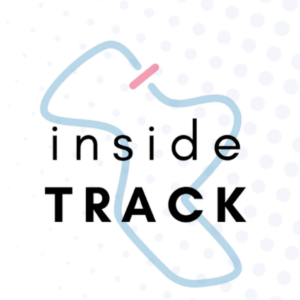
In the US, African American students are underrepresented in upper level math classes like eighth-grade algebra. As early as sixth grade, students are placed on a math track that determines which courses they will be eligible to take by the end of high school, affecting their ability to take advanced courses like AP Calculus before graduation. While these tracks are determined very early in academic careers, there are few opportunities for students to change tracks throughout the years. Tracking amplifies the systemic bias that keeps African American students out of upper level math classes, compounding the problem.
My solution is a website designed to help students access the resources and pathways they need in order to re-track between grades. This free service is designed as a series of 15 modules, designed to leverage existing, reputable content and record student progress to share with their schools. Ultimately, this service is designed to help families navigate the complex processes of placement in order to promote greater equity in access for all learners.
Amanda Da Silva – Líderes do Futuro

Policies for girls are designed by a room full of adults. What does it look like for girls to drive the conversation about their future? How would their world be if girls were able to materialize their visions, aspirations, and know-how?
[The Project] is a web platform that connects girls with curriculum, tools, and allies to create their own solutions towards a more gender equitable world together. The 15-module course uses an educational model that blends principles of (1) Collaborative Learning, (2) Social Change Model of Leadership Development, (3) Gender-Responsive Leadership, and (4) Design Thinking and Storytelling. Through the learning journey, participants will be guided to collaborate and learn together about topics such as values-based leadership, gender equity and game changing. [The Project] provides a learning environment where teenage girls (age 10-15+) will be able to reflect on their lives and their community, understand their rights, discuss issues that most affect them and define strategies to advocate for their priorities. And, in the end, they will be able to create a plan to act together.
B. Taylor Dansby – iBear
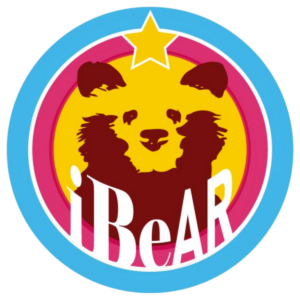
Augmented reality is an emerging technology that can support affordable and immersive learning experiences. Be Aware is a web-based platform that provides the resources teachers need to produce effective AR-based activities. Ignited by the social unrest felt during 2020, “school” went from a stable, effective, and reliable source of societal modeling. To one with increasingly obvious failings with an inability to support new ideas and pedagogical insights. Some of the most compelling dialogues in learning now revolve around concepts of restorative social justice, equity literacy, and gender inclusivity. For activist educators augmented reality is a promising tool that could empower elements needed most for a just education – like equity, diversity, and inclusivity. Imagine an experience that could provide intersections with multiple communities that might never meet in person. Or a mathematics activity that provides more than abstracted relationships to physical problems. There could be an opportunity to develop immersive role-play to provide meaningful context for complicated subject matter. There is a need for training, connections, and applications to introduce AR into classrooms. This project will develop fifteen modules that introduce key learning theories related to AR, identify evidence supporting the use of ARist learning, discuss ways that AR can cooperate with other emerging technologies, predict how future learning might be transformed by AR, and learn effective methods for designing lessons using existing AR products.
Marvin Espinoza – Espinoza
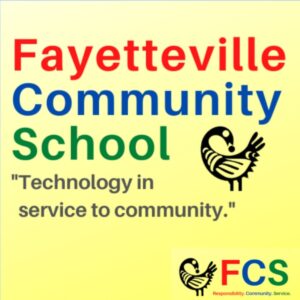
There are now several high-performing public charter schools serving our country’s most vulnerable and underserved students of color. Larger charter school networks like Uncommon, NorthStar Academy, Success Academy, and smaller ones such as Henderson Collegiate and Vista College Preparatory have achieved positive results in preparing students for college. These schools tend to follow a clear cut, data-driven instructional model that relies heavily on rote, skill-and-drill teaching strategies and worksheets. Additionally, while students in these schools do participate in some community events like volunteering, they do not bring the community into the classroom. In response, this project will propose the MEITE Community School Middle (MCS), which is a technology-based middle school that not includes data-driven instruction integrated with the sciences, the arts, and athletics. In this way, MCS empowers students to be active citizens in their communities by providing courses that integrate project-based learning with community service-projects that develop a child’s academic and character traits to go to and through the college or vocational program of their choice. The deliverable for this product will be a prototype website for MCS and a complete school plan along with other necessary information needed to apply for authorization to the North Carolina Charter School Advisory Board.
Petra Holesinska – Sports Digital Marketing

The digital marketing for the sports/athletic industry has been growing rapidly during the past five years. From the use of social media to smart stadiums, athletic teams are able to engage fans at a level never previously possible. This report will provide an overview of the history of the sports marketing industry, with a focus on technology’s impact on it. In addition, it will make predictions regarding technology’s future impact on the industry, such as the impact of virtual reality, having athletes connect with fans via social media, and more! To conclude, this report will highlight Creatitive, and share its opportunities to grow as well as potential shortcomings to its success.
Melissa Lobosco – {re}Design
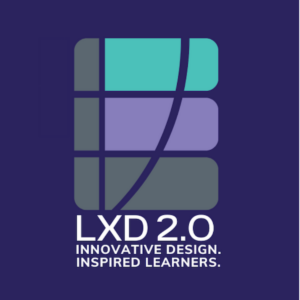
Instructional design graduate and certification programs are prolific due to the critical role these specialists play across industries. These programs traditionally prepare their students with the tactical knowledge and skills needed to build learning experiences for their schools or companies, but they fail to acknowledge how an organization’s existing culture, employee mindsets or learning preferences can create obstacles. So, how can instructional designers and technologists be prepared for these very real-world challenges?
Re-designing in Organizations and Institutions is a 15-module, asynchronous course in which instructional design students will learn how to unleash their role’s full potential by applying a set of transformational values, behaviors, and actions to it. The framework for this course will be anchored in a human-centered design approach. Participants will learn strategies to foster growth mindsets and collaborative practice for co-creating hybrid and online learning experiences. Participants will develop several process-driven artifacts to demonstrate their growing competencies.
Laketta Jackson – Overcoming Implicit Bias in the Classroom

Currently, about 79% of all public-school teachers are white, and in 40% of public schools in the United States, there is not a single teacher of color. On the other hand, 50% of public-school children are students of color; the fastest growing population of students are Hispanic/Latino. With the number of students of color increasing every year, it is important that educators work to fully dismantle systems of oppression that often begin in the classroom. INTROspect is a professional learning service that helps K-12 educators become more culturally competent. It is designed to inform educators on how to unpack racial and implicit biases, in an effort to reduce harm (whether intentional or unintentional) done in the classroom. The service will include a multi-module course, access to individual online help, as well as the option for in-person professional development sessions. The 15-module course will take learners on a journey. They will begin by unpacking their implicit biases to ultimately help them navigate through and learn best practices in the classroom. If requested, users of the service can request individual help online or to bring a professional development team to their school or work site for an in-person professional development.
Eben Lancerio – Blended Learning in the K12 Sector
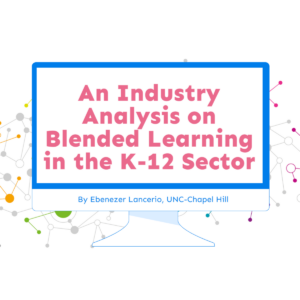
For decades, students in K-12 schools have had opportunities to attend distance education courses. However, the public education sector has maintained a mostly brick-and-mortar model [MOU1] [LE2] until the COVID-19 pandemic forced schools into a fully remote environment. As of March 2021, many public schools across the country are adopting a hybrid, or blended, learning environment in an attempt to fully reintegrate to in-person learning.
The term “blended learning” refers an instructional approach that combines online and face-to-face instructional activities (Boelens, Van Laer, De Wever, & Elen, 2015), to create more flexible modes of education, and personalized learning trajectories. Blended learning is seen as a step in the process towards reintegrating back into schools, but what if they considered blended learning as a viable option in the “new normal”? This industry analysis will focus on the 12, 24, and 36 month trends in blended learning education in public K-12 schools, and it will highlight the strengths, weaknesses, opportunities, and threats to a blended learning school.
Alexandra Lewis – Reading Foundations
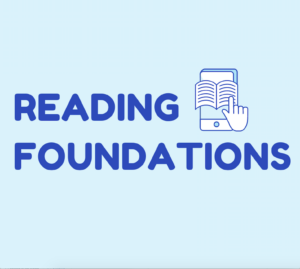
With only 35 percent of fourth-graders and 34 percent of eighth-graders reading at or above grade level, new approaches to reading intervention must be provided to teachers. For decades, there has been much debate over best practices for teaching students how to read. Reading Foundations is a 15-module course aimed to teach pre-service teachers and current teachers best-practice reading instruction based on the science of reading. Reading Foundations strives to deliver content that is research-based but delivered in a systematic and accessible way with teachers in mind. Reading Foundations is a fully online, asynchronous course that provides a bank of concise insightful videos, up-to-date, relevant research, realistic case scenarios, and ready-to-use teacher materials. The completion of this course will arm teachers with the knowledge, resources, and skills necessary to create the next generation of students who will move the needle in reading achievement.
Bronwyn Manley – Video – Crisis4Care
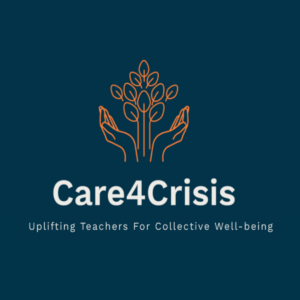
The number of people requiring humanitarian assistance is growing rapidly due to conflict and natural disasters. Currently there are more than 80 million people displaced, half of which are children. Displacement is traumatic and providing psycho-social support to promote well-being remains a challenge. While there are some established programs offering mental health and psychosocial support to children, recent literature and global sector reports highlight that there is very little support for humanitarian educators and frontline personnel. Educators play an influential role in crisis contexts as they are not only teachers, but caregivers, trusted sources of information and role models. Their well-being directly correlates with their ability to support student learning and here lies the opportunity to empower educators with tools which in-turn helps child well-being.
Care4crisis is a professional development hub for humanitarian educators, both qualified and unqualified, working in protracted crisis settings. Within this hub educators and frontline personnel will be able to find, discuss and share simple tools that address well-being in their wider community, including their own communities as well as those of their peers, caregivers and learners. The hub includes a means to chat and share content, a means to connect untrained educators with those more experienced and a suite of micro-mobile professional development courses connected to community well-being in displaced contexts. The Care4Crisis hub includes examples of delivery models for educator well-being programs via text, WhatsApp and online. The topics addressed by our self-directed courses are specific to crisis setting and include educator self-care, gender-based violence, conflict management and the integrations of social emotional learning in practice. Each course is carefully designed for low resource settings and offline consumption. The micro-suite includes design attributes for simple adaption so it can be localized and scaled quickly and cost effectively in crisis settings.
Erika Murray – Building Foundations
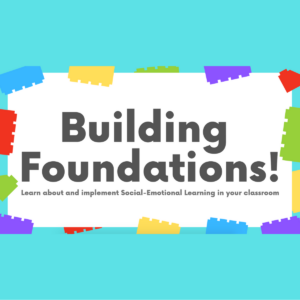
Aristotle once said, “Educating the mind without educating the heart is no education at all.” In a classroom, a teacher’s role extends past the instruction of academic standards to developing their students into well-rounded and stable individuals. In a tech-heavy world, children are constantly separated from others by various technological materials and screens, which can cause a lack of interpersonal skills amongst learners. In an effort to create awareness of Social Emotional Learning and the importance of teaching interpersonal and self-regulatory skills, this 15-module asynchronous online course is designed as professional development for teachers to implement Social Emotional Learning (SEL) in their K-5 classrooms. This course will provide context about what SEL is, why it is important, and how teachers can effectively implement this learning in their classroom and on a digital platform. This course is designed to support teachers in creating cooperative and inclusive instruction, as well as meeting students’ needs beyond the classroom and into society.
Claire Paulson – ncleg.gov Redesign
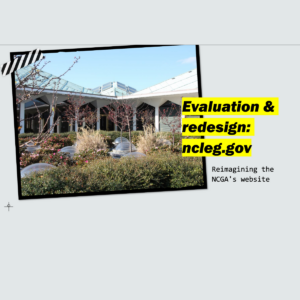
How well do you know the voting patterns of the legislators that represent you at the national level? At the state level? If you’re like many people, the answer is “not at all.” While legislative bodies keep public records of their activities and list these on publicly available websites, these are often difficult to navigate and understand for lay people. There is great opportunity to make such resources more user-friendly and accessible; doing so could improve civic engagement and literacy among the voting public as well as transform these into resources that civics teachers at the high school or middle school level could feasibly use in the classroom. In this project, I will evaluate https://www.ncleg.gov/ using both heuristic evaluation and user testing methods. Based on evaluation results, I will prototype a revised version geared toward ease of use for individual voters and civics classrooms.
Joe Pickering – University Soccer Abroad
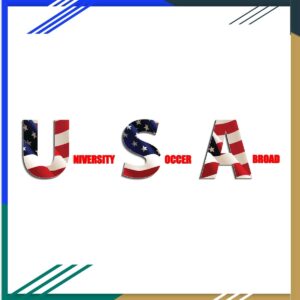
There is a huge demand for international soccer players at American universities due to the highly competitive nature of soccer outside of the United States. Therefore, college coaches are spending more time and money on overseas recruiting. At the same time, more soccer players outside of the United States are looking to become student-athletes in American universities. However, the current system in place is not efficient because too many players are not getting the chance to be seen by coaches. This may be because of poor marketing skills or the absence of a channel for communication. Coaches are overlooking quality players, and similarly, players are missing out on being able to study at great schools and opportunities in the United States. In response, University Soccer Abroad is a new system that connects coaches with players. The system will teach athletes how to build their profiles and market themselves to coaches in the United States, and it will provide coaches with direct channels for recruiting these international players. This new system will allow for better communication between prospective players and coaches, provide coaches with more opportunities to see more of players through video analysis, and give players a better understanding of potential schools and the culture in these schools. University Soccer Abroad has the opportunity to revolutionize the recruiting process for international soccer players who dream of playing in the United States.
Elyse Smith – Education and Outreach
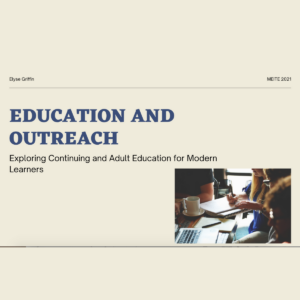
Educational outreach programs and adult education are changing rapidly. These programs may include course structures and outreach strategies that worked 10 and 20 years ago but do not work now. University students and other adult learners are becoming more diverse in racial and ethnic identity, age, and socioeconomic status. Outreach programs at museums and non-profits are having to find ways to navigate changing demographics in adult learners as well. With a range of organizations supporting adult and continuing education– including colleges, non-profits, and museums, etc. – they need to consider affordability, digital accessibility, and communication methods, among other concerns. This report will address the history and trends of education and outreach programs as well as the strengths, weaknesses, opportunities, and threats for the Friday Center for Continuing Education at the University of North Carolina at Chapel Hill. The report will conclude with some recommendations for the Friday Center and how those recommendations can translate to other organizations. As the landscape of adult and continuing education continues to change based on shifting demographics, societal needs, and advancing technology, our institutions’ outreach programs should be prepared to change and grow as well.
Savannah Windham – Beginning Teacher Skills & Resources

One in five teachers leave the classroom in their first five years. In response, research has shown that supporting beginning teachers during their first three years of their careers is critical for equipping them with the knowledge and skills needed to happily remain in the classroom. To further support them, this project will introduce “Beginning Teacher Skills & Resources” as a 15-module asynchronous online course that supports Durham Public Schools’ (DPS) early-career teachers. Specifically, the course will focus on important topics such as self-care, time management, and other topics researchers have identified as being important for beginning teachers to develop expertise and remain in the classroom. The course will also connect teachers to local professional development opportunities and classroom resources as well as networking opportunities. By completing “Beginning Teachers Skills & Resources,” early-career teachers will obtain the necessary personal and professional skills to survive and thrive during their first three years in the classroom.
Dorrian Wilson – Coco Griot
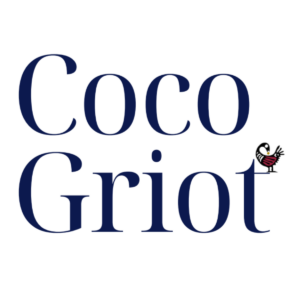
Through their creative achievements and influence, African American artists have expanded and enriched the ways that theater, film, and television reflect the diversity of American society. However, the contributions of African Americans in the arts go largely unnoticed. African American artists have developed various strategies to overcome the limits that society has placed on their creative freedom, opportunities, and identities. They have expressed a collective belief in the power of performance to serve as a tool of liberation and transformation—personal, cultural, social, and political. Therefore, this project is to curate a digital gallery museum dedicated to African American Theatre, focusing on Black theatre history and legacy. Each section will highlight key events, figures, and themes from various eras and bring legendary performances to life through artifacts, historical images, and media presentations, digitally. It will also give access to over 500 years of digitized manuscripts and archives, from African dance through Academy Award winning films. Why? The answer is simple, one doesn’t exist. There is not one museum dedicated to African Americans in performing arts in the world and it is time one was born. Digitally!
Devon Young – Positive Deviance
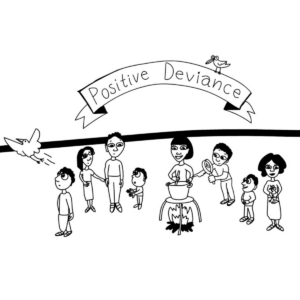
Followers of the Positive Deviance framework believe that in every community there are certain individuals or groups whose uncommon behaviors and strategies enable them to find better solutions to problems than their peers, while having access to the same resources and facing similar or worse challenges. Positive Deviance is an asset-based, problem-solving, and community-driven approach that empowers members of a community to discover successful “deviant” behaviors and strategies and develop a plan of action to incorporate a similar process in their own work.
Too often educational consultants are brought into schools to solve complex, messy problems that exist within the school community. While they may come up with some great solutions, there are likely capable, intelligent and creative individuals already working within the school community who understand the culture and context much better than an external advisor.
This report will focus on exploring the Positive Deviance framework’s ability to solve complex, messy problems in many industry sectors, including K-12 education. This analysis will interrogate Positive Deviance Collaborative, the founders and leaders of the Positive Deviance movement, and examine their strengths, weaknesses and opportunities as a potential resource for schools hoping to solve problems using only the resources that already exist within their school community.